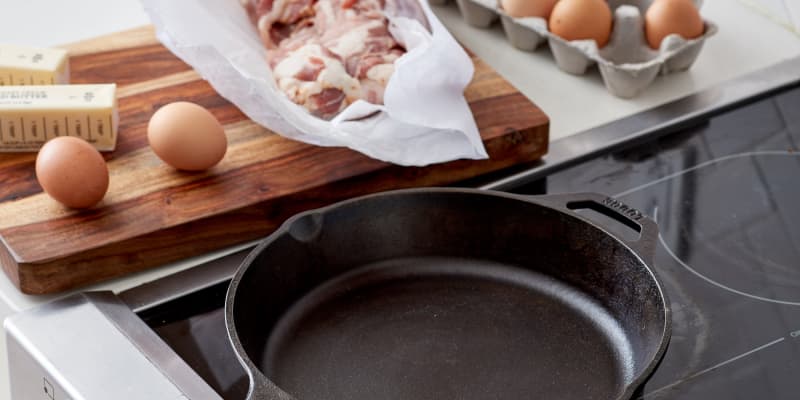When it comes to cooking on an induction stove, many people wonder what cast iron is best for induction. Induction cooking requires specific types of cookware, and choosing the right cast iron can make all the difference in your culinary endeavors. In this article, we will explore the different types of cast iron cookware that are ideal for induction cooking. We will also delve into the benefits of using cast iron on induction cooktops and provide tips on how to maintain your cookware for optimal performance.

The Science Behind Induction Cooking
Before we dive into the best cast iron options, its important to understand how induction cooking works. Unlike traditional gas or electric stoves, induction cooktops use electromagnetic fields to heat cookware directly. This means that the cookware itself must be made of a magnetic material, such as cast iron, to work with an induction stove.
Why Choose Cast Iron for Induction?
Cast iron is one of the most popular choices for induction cooking because of its unique properties. First and foremost, cast iron is naturally magnetic, making it compatible with induction cooktops. Additionally, cast iron is known for its excellent heat retention and distribution, which ensures even cooking. This is especially important when using an induction stove, as the heat is generated directly in the cookware.
Types of Cast Iron Cookware for Induction
There are several types of cast iron cookware that work well on induction stoves. Each type has its own advantages, and the best choice depends on your cooking needs and preferences.
Traditional Cast Iron Skillets
Traditional cast iron skillets are a staple in many kitchens. They are versatile, durable, and perfect for induction cooking. These skillets are usually pre-seasoned, which means they have a natural non-stick surface. They are perfect for searing meats, frying, and even baking.
Enameled Cast Iron
Enameled cast iron cookware is another excellent option for induction stoves. The enamel coating prevents rust and makes the cookware easier to clean. It also means that you dont have to season the cookware as you would with traditional cast iron. Enameled cast iron is great for slow cooking, braising, and making soups.
Cast Iron Griddles
Cast iron griddles provide a large, flat cooking surface that is ideal for pancakes, sandwiches, and more. These griddles are perfect for induction cooking because they offer even heat distribution and excellent heat retention.
Maintaining Your Cast Iron Cookware
Proper maintenance is essential for keeping your cast iron cookware in top condition. Whether you have traditional or enameled cast iron, following these tips will help extend the life of your cookware.
Seasoning Your Cast Iron
If you use traditional cast iron, its crucial to maintain its seasoning. This involves applying a thin layer of oil to the surface and heating it until it forms a protective coating. This not only prevents rust but also enhances the non-stick properties of the cookware.
Cleaning Tips
When it comes to cleaning, avoid using harsh detergents on your cast iron. Instead, use warm water and a gentle scrub brush. For stubborn food residue, you can use a paste of baking soda and water to gently scrub the surface.
Storage Advice
To prevent rust, always ensure that your cast iron is completely dry before storing it. You can also place a paper towel between stacked pieces to absorb any moisture.
Common Issues and Solutions
While cast iron is generally easy to use and maintain, you may encounter some common issues when using it on an induction cooktop. Here are a few solutions to help you overcome these challenges.
Uneven Browning
If you notice uneven browning, it could be due to cold spots in your cast iron. To solve this, ensure that your cookware is properly preheated before adding food. For more details, check out this article on uneven browning in cast iron.
Smoke Issues
If your cast iron becomes smoky on induction, it might be due to cooking at too high a temperature. Lower the heat and ensure your skillet is clean and properly seasoned. Learn more about handling these issues at cast iron becoming smoky on induction.
Energy Usage
Using cast iron on an induction cooktop is energy efficient because the heat is directly transferred to the cookware. For more insights, read about energy usage of cast iron on induction.
FAQs About Cast Iron and Induction Cooking
Can all cast iron cookware be used on induction stoves?
Yes, all cast iron cookware is compatible with induction stoves because of its magnetic properties.
How do I know if my cookware is induction-compatible?
To check if your cookware is suitable for induction, simply see if a magnet sticks to the base. If it does, your cookware can be used on an induction stove.
Is enameled cast iron better than traditional cast iron for induction?
Both enameled and traditional cast iron have their advantages. Enameled cast iron is easier to maintain, while traditional cast iron offers a natural non-stick surface when properly seasoned.

Conclusion
Choosing the right cast iron for your induction cooktop can greatly enhance your cooking experience. Whether you opt for traditional or enameled cast iron, understanding the benefits and maintenance tips will ensure your cookware performs at its best. By following the advice in this article, you can enjoy delicious meals and efficient cooking with your induction-compatible cast iron cookware. For further reading, consider visiting how cast iron works on induction cooktops.
This article contains affiliate links. We may earn a commission at no extra cost to you.

